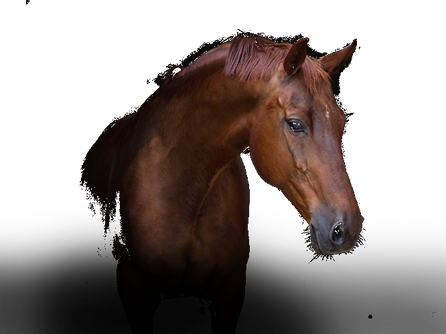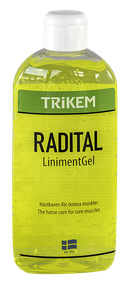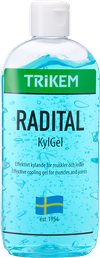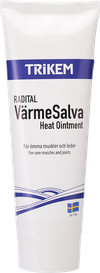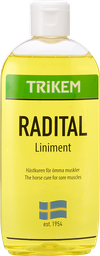Academy / Horse / Trikem clarifies / How does a liniment work?
How does a liniment work?
To maintain a healthy, well-performing horse, care is needed both from the inside out and the outside in. Various methods, such as applying heat or cold through massage, liniments, or cold water, can help care for the horse’s joints, ligaments, and muscles before and after training. But how do these methods work, and when should they be used?
Liniment
Liniments are available in liquid or gel form. Depending on their composition and active ingredients, they can have cooling, warming, or dual-action effects, meaning they first cool and then warm. Liniments are applied by massaging them into targeted areas such as muscles, joints, tendons, and ligaments. The more you massage, the deeper the liniment penetrates the skin, increasing its effectiveness. Many liniments are based on plant extracts, known for their anti-inflammatory and analgesic (pain-relieving) properties. For example, anti-inflammatory liniments reduce the influx of inflammatory cells, which decreases swelling (edema). Edema, or fluid buildup, can press on tissues and cause pain. By reducing swelling, pain also diminishes. Common extracts include clove and Arnica Montana, known for their mild pain-relieving effects.
Warming liniment
Applying a warming liniment to a muscle increases blood flow, as the body responds by sending blood to cool the area. This promotes recovery after exercise, as increased blood flow speeds up the removal of waste products from muscle cells. After intense training, applying a liniment can help the horse recover faster.
Dual-action liniment
A dual-action liniment initially provides cooling to reduce active inflammation. As the liniment transitions to a warming effect, it increases blood circulation, bringing anti-inflammatory cells to the affected area. This combination is often chosen for joints, tendons, and ligaments. A similar effect can be achieved by using cold water for about 15 minutes and then bandaging the legs with stable wraps after the horse dries.
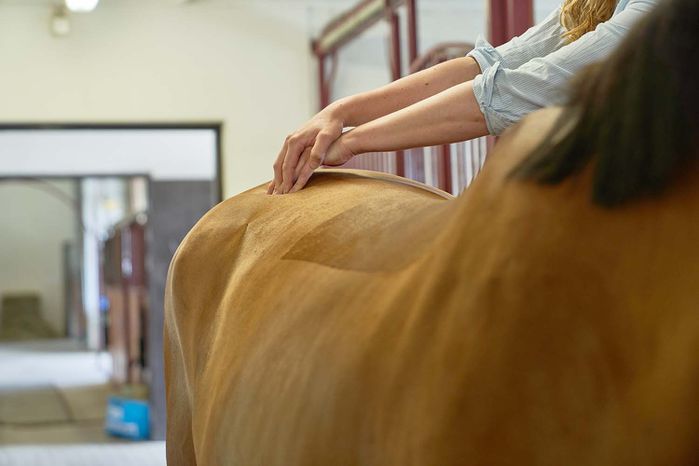
Should I use water or cooling gel?
Using cold water on a horse's joints and ligaments after a training session works very well. The purpose is to reduce blood flow and thereby decrease inflammation, which commonly occurs after intense exercise. Cold also has a mild pain-relieving effect, which can be comforting for the horse in cases of tendon or ligament injuries. The downside of using water is that you often need a wash station where the horse can be tied up, and you also need time to rinse the horse thoroughly. Expect to rinse for 15–20 minutes to achieve the desired effect. If rinsing is done for a shorter period, the cooling effect is lost, and the effort is ineffective. Today, there are smart solutions, such as cooling hoses that allow all the horse's legs to be cooled simultaneously. However, these hoses are often expensive. Additionally, water has become somewhat of a scarce resource in recent summers due to dry climates. Therefore, we all need to do our part to help the environment. A cooling gel is a simple and practical alternative. It’s easy to bring along when traveling for competitions or training. You don’t need a wash station, and it saves you a lot of time!
Which liniment should you use?
Arnica - Contains extracts from the well-established flower Arnica Montana and has long been an effective method for treating and relieving symptoms of sore muscles, strains, or inflammations. Arnica can be used on muscles, joints, ligaments, and tendons. It is well-suited as a massage liniment for the muscles along the back and hindquarters. A blanket or bandage can be applied to the horse directly after use to further provide and retain warmth.
IceGel - A cooling gel that’s easy to apply to the horse’s legs after training. Perfect for warm summer months when additional heat should be avoided.
Competition Gel - An excellent product to use on tendons, ligaments, and joints after an intense training session. It provides an initial cooling effect, followed by a deep, soothing warmth that is both comforting and beneficial. Competition Gel is developed with Radital liniment in mind, contains clove extract, and is completely doping-free.
VärmeSalva - Provides deep, targeted warmth. Ideal for smaller areas where the horse frequently experiences issues or soreness. Suitable for muscles and joints. Note: 96-hour withdrawal time before competition.
Radital Liniment - One of Trikem’s original products, available for over 65 years. Still one of the most popular products for both horses and humans. Initially cooling, it transitions to long-lasting warmth. Excellent for sore muscles. Note: 96-hour withdrawal time before competition.


